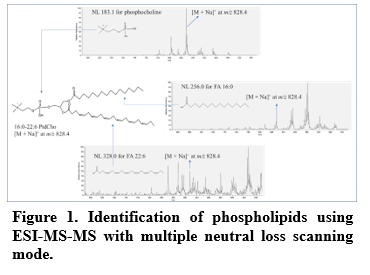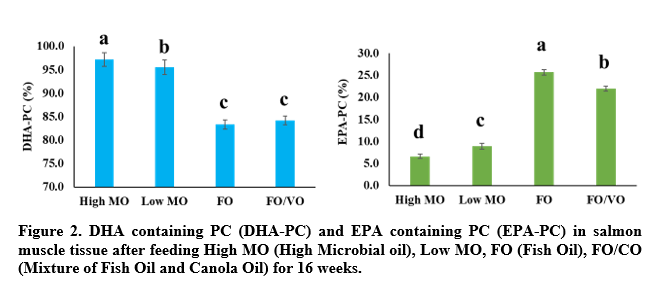EVALUATION OF PHOSPHOLIPID AND EICOSANOID PROFILES IN ATLANTIC SALMON Salmo salar L. MUSCLE AFTER FEEDING MICROBIAL OIL USING ELECTROSPRAY IONIZATION (ESI) TRIPLE QUADRUPOLE MASS SPECTROMETRY
Changes in phospholipid and eicosanoid profiles of Atlantic salmon muscle after feeding diets with different levels of microbial oil, fish oil and canola oil were investigated using electrospray ionization (ESI)-MS-MS in a triple quadrupole mass spectrometer. A total of 43 PL species with various fatty acyl chain combinations was identified in the four dietary groups of salmons. The group fed with microbial oil, which contains a high level of DHA, showed an increased level of DHA in the structure of PC (phosphatidylcholine) and PS (phosphatidylserine) in muscle tissue compared to salmon fed with fish oil and the mixture of fish oil and canola oil. This indicates that DHA present in the diets (High and low microbial oil) was efficiently converted/synthesized into phospholipids, followed by accumulation in salmon muscle tissue. In addition, two eicosanoids, prostaglandin E2 and F3α, were also identified for the first time in salmon muscle tissue and their quantitative changes upon feeding four different diets will be discussed in detail. This study suggests that the shotgun lipidomic approach along with neutral loss and precursor ion scanning modes is a useful means for the lipidomic analysis of fish tissues.

